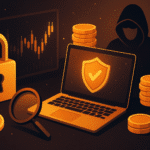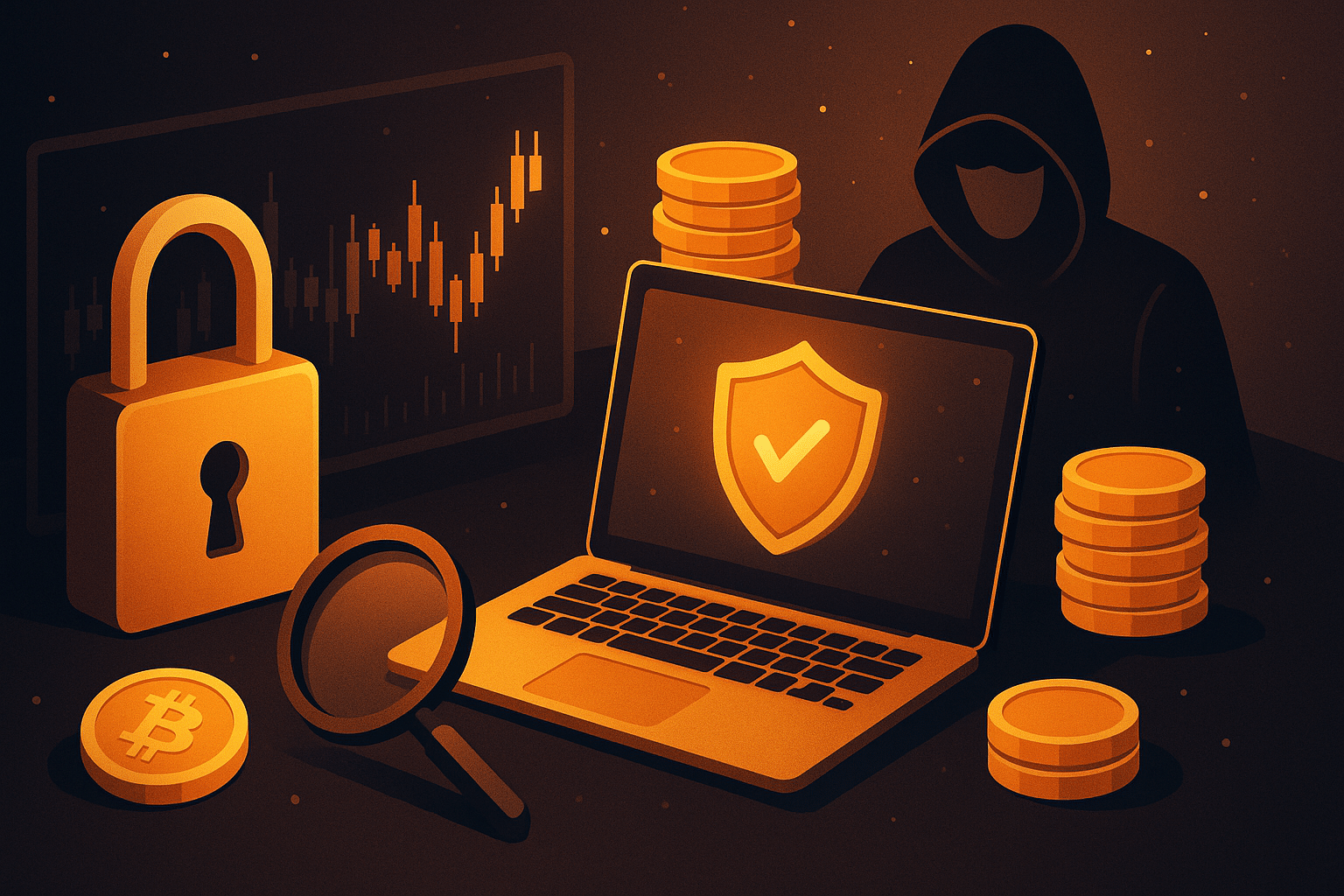How to Spot Rug Pulls and Scam Crypto Projects Before They Launch
Even after so many warnings, rug pulls keep happening in crypto. New projects emerge every few weeks with tremendous hype and marketing gimmicks, only to see the investors left behind when the project disappears in the blink of an eye. This way, billions of dollars have been wiped out. Nevertheless, the reality is that the same misconceptions still attract many people.
Rug pulls aren’t merely random occurrences but rather plotted frauds in which the project’s founders steal the investors’ money and run away. Some frauds can be easily detected, while others are very professional and look like real businesses. The objective of this blog is to make people aware of the signs one should be looking for before any project takes off, so that they can safeguard their money from phony tokens or NFTs.
In 2025, the cryptocurrency market is more extensive than ever before. The number of new coins shows up each week, and it is difficult to determine which ones are legit. This tutorial provides a comprehensive description of the mechanism of rug pulling, the methods of proper checking of projects, and the tools that can be used to detect scam tokens at an early stage.
What Is a Rug Pull in Crypto?
The Simple Definition
A rug pull happens when a crypto project’s team runs away with investors’ money. Generally, funds are generated by issuing a token or NFT, and then after a certain number of buyers, the crew either takes away all liquidity or just puts everything to an end. Price dives to nothing, and there is no way for anyone to sell or get his/her/their money back.
Such frauds may take place in presales, unregulated exchanges, and even NFT platforms. And the risk of rug pulls is that they frequently appear to be very authentic.
Types of Rug Pulls
There are a few main types of rug pulls, and they all trick investors in different ways.
Liquidity Rug Pulls happen when developers remove all the money from liquidity pools after launch. The token price drops instantly, and holders are stuck.
Code Exploits are when scammers hide harmful functions inside the token’s smart contract, allowing them to mint new tokens or block sales.
Soft Rug Pulls happen slowly. Teams just stop communicating, stop updates, and fade away after collecting enough money.
| Type of Rug Pull | How It Happens | Main Warning Sign |
| Liquidity | Team removes all tokens from liquidity pool | Sudden price crash |
| Code Exploit | Hidden backdoor in smart contract | Unverified contract |
| Soft Pull | Team stops updates or communication | Ghosted community |
Why Scam Projects Look Real at First
Scam projects have become smarter. Many now copy the websites and documents of real ones. They pay influencers, write fake whitepapers, and even post audits that look official. Because of this, it’s very easy for beginners to trust them.
People want to believe in the next big thing. Scammers know that, so they use hype words like “AI-powered,” “DeFi revolution,” or “next 100x gem.” This tricks investors into thinking it’s a big opportunity.
In reality, these scams often have no product, no working code, and no real team. They just use emotion and fear of missing out to make people invest quickly. That’s why slow research is always better than fast decisions.
Common Red Flags in New Crypto Projects
Anonymous or Fake Team
When the team behind a project hides their names, it’s a big warning. Real projects usually have developers with public profiles on LinkedIn, GitHub, or X (Twitter). Scam teams often use fake photos or names that can’t be verified.
A quick online search usually shows if someone is real or not. If every team member only joined social media last month, something’s off.
No Real Whitepaper or Vague Roadmap
Many scam tokens publish a whitepaper, but it’s just a few copied paragraphs and big promises. Real whitepapers explain what the project does, how it works, and what goals it has. A vague roadmap is another sign. It might just say “Q1 – Launch,” “Q2 – Marketing,” with no details.
| Feature | Real Project | Scam Project |
| Whitepaper | Technical, clear goals | Vague and repetitive |
| Roadmap | Includes deliverables | No dates or milestones |
| Tokenomics | Transparent numbers | Unrealistic rewards |
Unrealistic ROI Promises
If a token promises 1000x profits or “guaranteed” returns, it’s a scam. No one can predict that. Rug pull teams use big numbers to attract attention. They say early investors will become millionaires, but that never happens.
Locked or Unlocked Liquidity
Liquidity means how easily tokens can be traded. Real projects lock liquidity for months or years, so no one can steal the funds. If liquidity is unlocked, the team can remove everything. Always check lock status on DEXTools or Unicrypt.
How to Analyze Smart Contracts Before Investing
Smart contracts are programs that control how tokens behave. They’re the backbone of every crypto project. Scammers often hide traps in these contracts, so it’s important to know what to look for.
Using Token Scanners and Audits
Websites like TokenSniffer, DEXTools, and CertiK let users analyze smart contracts. TokenSniffer gives a score based on how safe a token is. CertiK lists audits for many big projects.
If a project isn’t listed or has a poor score, it’s safer to avoid it. A real audit includes the auditor’s name, contact info, and test summary. Fake ones just show a logo with no verification.
Contract Red Flags
Some dangerous smart contract functions include “mint,” “pause trading,” and “transfer ownership.” These let the developer change things after launch.
Verifying Partnerships and Audits
Many scam tokens post fake partnerships with brands like Binance or Coinbase. But real companies announce partnerships on their official pages. Always check that.
Scammers also fake audits by creating PDFs with logos of big audit firms. Real audits can be verified on official sites like CertiK or Hacken. Check the date and signature before believing it.
Even influencer promotions can be paid lies. Real projects usually have verifiable business connections, not just flashy videos.
How to Research Before a Presale
DYOR (Do Your Own Research)
DYOR means doing personal research before investing. Don’t rely only on Telegram or social media posts. Check if the project has a working prototype, a GitHub repository, or any traceable company information.
Reading the whitepaper, exploring contract addresses, and understanding team backgrounds can save money.
Cross-Check Everything
Use multiple sources to verify what the project claims. Websites like CoinMarketCap, Reddit, and Twitter are great to see if others have concerns.
If different platforms give different information, it’s probably not safe. Also, check if news sites have covered it legitimately or if it’s just paid promotions.
Taking time to cross-check even small details can make a huge difference.
What to Do If a Rug Pull Happens
If a rug pull happens, the first step is to report it. Exchanges can sometimes freeze accounts or track funds if action is quick. Reporting to blockchain explorers or scam watchdog sites can also warn others.
Sharing information in crypto communities helps stop the same scam from happening again. Sadly, most rug pull funds are not recovered. That’s why prevention is always better than waiting for recovery.
The key lesson is to treat every project like it could be fake until proven otherwise.
Future of Crypto Security and Regulation
Crypto regulators around the world are trying to stop scams by demanding better project transparency. AI-based scanners are also being developed to detect fraud before tokens even launch.
Some countries now require presales to verify the identities of team members. Exchanges are improving too, by listing only KYC-verified projects.
Still, education is the biggest defense. Investors who learn to check details are the hardest to fool. The goal of crypto should be innovation, not deception, and awareness can make that real.
Conclusion – Stay Alert, Stay Safe
As long as there are investors who hurry up and do not check, the rug pulls will keep occurring. But being vigilant makes the whole difference. A little research can cost you a thousand dollars less.
No project is worth risking everything for. The real cryptocurrency development is taking place in a slow and open manner. Whenever there is a promise that seems too good to be true, it really is usually so. Being careful is not fear—it’s being smart.
FAQ About Scam Projects
What is a rug pull in crypto?
It’s when developers take investors’ money and disappear after launching a fake project.
How can a rug pull be avoided?
By checking team info, audits, liquidity locks, and contract safety before buying.
Are all new crypto projects risky?
No, but many early projects are high risk, so always do deep research.
Glossary
Rug Pull – When a project disappears with investors’ money
Liquidity – The amount of money available for trading tokens.
Audit – A check done by security experts to verify a smart contract.
Tokenomics – The structure of how tokens are distributed.
Vesting – The period when tokens are locked and not tradable.
Summary
Rug pulls constitute a category of cryptocurrency scams that are most frequently encountered, where the developers steal money from the investors and vanish post-launch. The first phase of such activities mostly consists of launching fake presales, using whitepapers that have been copied, and making loud social-media-based promotions that are probably too good to be and hence are over-hyped. Investors should be prudent and cautiously check the project’s team identity, whitepaper details, liquidity lock status, and smart contract functions. Before investing, one can use tools like TokenSniffer, RugDoc, and DEXTools to uncover contract risks or fraudulent audits. Authentic projects will have clear tokenomics, present products, and credible audits, whereas the scams will rely on unrealistic profit claims and nameless individuals on their team. The checking of community activity, collaborations, and token distribution happens to be the methods that easily expose the fake setups. Despite the fact that regulations and AI tools are getting better, awareness remains the biggest defense mechanism. Doing your research and verifying before you join a new project can save you from making huge financial losses. To conclude, it is said that, in the year 2025, patience and education will be the most powerful shields against rug pulls and scam projects in crypto. You bet they will!
Read More: How to Spot Rug Pulls and Scam Crypto Projects Before They Launch">How to Spot Rug Pulls and Scam Crypto Projects Before They Launch




